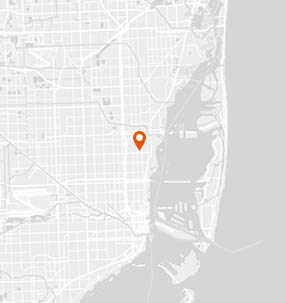Located about five miles north of Downtown Miami – wedged between the city’s Design District to the south and the wealthy Upper Eastside neighborhood to the east – is Little Haiti: the heart of Miami’s Haitian community. Known for its Victorian architecture, bright pastel colors, French-Creole designations, and buzzing artistic scene, Little Haiti (historically known as Lemon City) is steeped in the rich cultural history of Caribbean immigrants who first flocked to the area in the 1890s. Today, the neighborhood offers residents an urban-suburban feel, with most people renting their homes.
In recent years, Little Haiti has experienced a surge in mainstream popularity and prominence as an indie arts haven, with neighbors Wynwood and Design District feeding an overflowing appetite for street art and high-end design. Within Little Haiti itself, the community delivers on that billing via a long-standing artistic tradition, supporting a mix of local street-side artisans along with established galleries and performance houses like Moksha Arts Collective and Yo Space. But perhaps the most compelling development in Little Haiti’s transformation from immigrant enclave to artisan hub is Oolite Arts’ – one of Miami’s oldest art organizations – plans to build its new $30 million HQ within the neighborhood.
On an even broader level, the development of the area’s Magic City Innovation District also hints at a similar future for Little Haiti: in 2021, developers were given the green light to start construction on the $1 billion, 18-acre complex set to feature over 2,600 residential units and 340,000 sq. ft of retail space, among numerous other residential and professional projects. At the same time, MCID developers will also be cutting periodic checks of $3 million to the local government’s Little Haiti Revitalization Trust that will be used to invest in local businesses and affordable housing.
But even as gentrification looms, Little Haiti still pulses with the heartbeat of its native cultures, particularly in its dining, with traces of French, West African and Caribbean cuisines melding to form a delicious mashup of Miami-style comfort food. There’s also the area’s Caribbean Marketplace: a modern-day replica of Port Au Prince’s famed Iron Market, featuring 9,000 sq. ft of authentic Haitian vendors.
And for would-be residents looking to navigate the neighborhood’s ins and outs, Little Haiti isn’t walkable like more urban areas of Miami, but is serviced by the city’s Metrobus system, as well as a new route by the Miami Trolley with over 50 stops throughout the area.
Yet even with its undeniable cultural charm, Little Haiti still falls short in a number of key areas from a livability perspective, including a less-than-stellar public infrastructure (cracked roads and decaying buildings are common), and a total crime rate nearly 132% higher than the national average.
Straddling the line between close-knit immigrant community and emerging arts haven, Little Haiti is on the verge of change—albeit, change that spells an improvement in the neighborhood’s quality of life and appeal to new and existing residents.

Iconic city landmark commemorating the father of the Haitian Revolution.
9,000 sq. ft marketplace featuring a variety of authentic Haitian vendors; a focal point of Haitian business and culture in Miami.
Popular independently owned record store boasting a curated collection of classic records and weekly live events.
Modern food hall and bar with live music, retailers, and rooftop lounge.
Traditional Bahamian and Creole cuisine served in a festive outdoor environment.